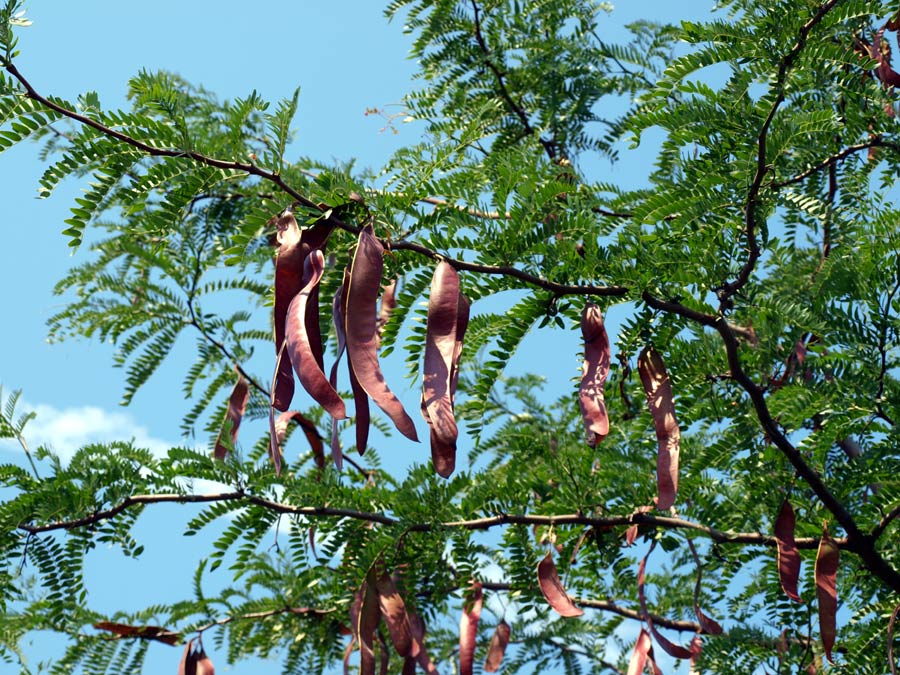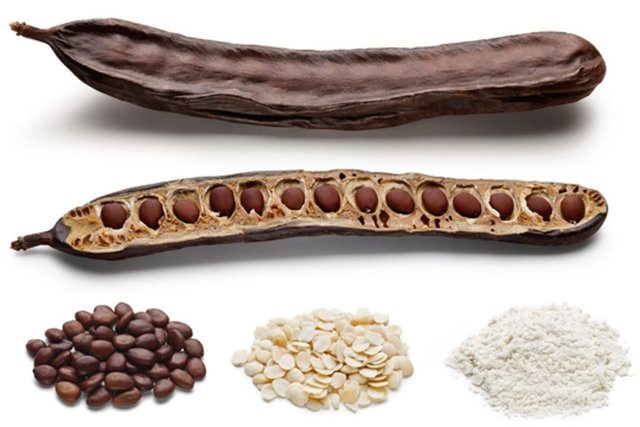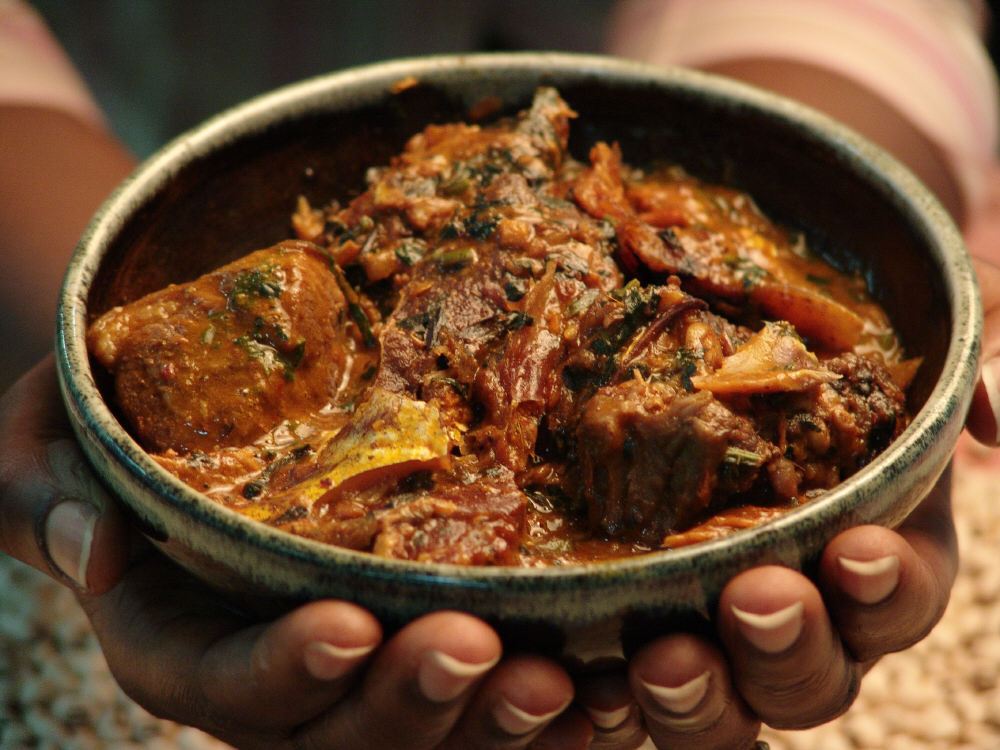
African locust bean popularly called ‘iru’ by the Yorubas, ‘ogiri’, by Igbos and ‘dawa dawa’ by the Hausas, is a local seasoning or condiment used in soups and stews.
‘Iru’ which goes by the botanical name Parkia biglobosa, belongs to the plant family Mimosaceae of the order Leguminisae, and is used in all parts of Nigeria and the West Coast of Africa for seasoning traditional soups.
 Locust bean tree
Locust bean treeIt can be found in a wide range of environments in Africa and is primarily grown for its pods that contain both a sweet pulp and valuable seeds. The locust bean are high in lipid (29%), protein (35%), carbohydrate (16%), and is a good source of fat and calcium for rural dwellers.
The African locust bean tree is known Igba or Irugba in Yoruba, Dorowa in Hausa, Nune in Tiv, and Ogiri in Igbo.
Locust beans are be converted into powdery form and packaged into various sizes in plastics for easy distribution.

When fermented the African Locust bean, though with an offensive smell is used to season local soups, from bitter-leaf soup (Onugbu in Igbo) to palm fruit soup (Ofe akwu ), etc.
When boiled and fermented, it becomes dawa dawa in Hausa – a black strong smelling tasty seasoning.
Locust beans can be added to almost every food, because it does not only tastes good and serve as a tastier alternative to other spices cubes, but also due to its health benefits among which are vision improvement, digestion aid and much more.
Asides boosting cellular immunity in immune-compromised persons, as well as, in the management of diarrhoea, diabetes, and heart attack, African locust beans could also serve as an antidote to snake bites.
The bark is used as a mouthwash, vapour inhalant for a toothache, or for ear infections. It is macerated in baths for leprosy and used for bronchitis, pneumonia, skin infections, sores, ulcers, washes for fever, malaria, and sterility. Roots are used in a lotion for sore eyes. ”
The roots are used in a lotion for sore eyes. In Gambia, the leaves and roots are used in preparing a lotion for sore eyes.
Research has also revealed that African locust beans could also be employed in wound healing. The pulped bark is used along with lemon for wound and ulcers. It is also known to provide an ingredient that is used in treating leprosy, and for treating hypertension.

A recent study suggests that the aqueous extract of leaves of Parkia biglobosa stimulate the production of total lymphocytes (white blood cells) and TCD4+ (a marker of the immune system).
The portion of carob that is in locust bean gum contains soluble fibre in the galactomannan family. Like other forms of soluble fibre, African locust beans has shown potential benefit for enhancing weight loss and controlling blood sugar levels.
So if you have not eaten food spiced with locust bean before, you are denying yourself a whole lot of health benefits and I am sure you will make it a major ingredient in the next soup or stew you prepare, not minding its unpleasant smell.
SO WHAT DO YOU ACTUALLY THINK ABOUT THIS POST? WHY DON'T YOU SCROLL DOWN BELOW AND LEAVE A COMMENT FOR PEOPLE TO SEE...
Loading...
testin
No comments:
Post a Comment
What Do You Think About This Post?
Post Your Comments